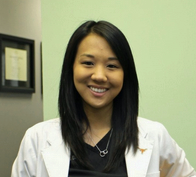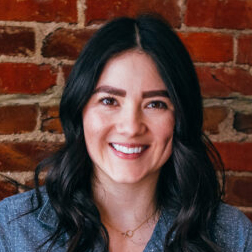Praise For: Tongue-Tie and Palate Evaluation Procedures
Hear directly from our students about the benefits of our program.
-

Jonah Wright, DC
“I have learned so much throughout the last 3 months of this course. I love how Dr. Rosen conveyed the importance of how the motion of the palate and the quality of function of a child suck, swallow and breath complex impact the rest of the cranium as well as the CSF as a whole. I appreciate the way in which this course was taught. Dr. Rosen did not skip right to the palate work but took the time to take a broad view of the cranium and then gradually the videos became more specific to the palate as the course progressed. I was prepared and eager for the next week’s course to drop. Third, I enjoyed the way in which palate corrections were taught. Simple steps in order to evaluate and make efficient corrections.
The course came at the perfect time in my life. My wife and I just had a baby girl. She had moderate tongue and lip ties. There was trouble nursing, sucking, and breathing. We started palate work early and saw great changes in her craniofacial system. Very quickly, nursing, sucking, and breathing improved. She is now a champion eater and has a head shape that I am so proud of haha. Professionally, I have had my eyes on getting into cranial adjusting for a couple years now. Took my first year of practice to focus on the neuro spinal system and now at the beginning of my second year in practice I am pumped to start the process of introducing cranial evaluation and corrections to my tool belt.
Our office at PWC Chiropractic takes on the toughest of cases. There are many points where thinking outside of the conventional box is necessary and beneficial to the patient. I felt like I attracted patients that needed palate and tongue tie work during this last 3 month stretch. I was able to confidently educate the parents on what was going on with their child and how it impacts their child as a whole. Many parents chose the wait and see approach and throughout consistent chiropractic care on the neuro spinal system as well as specific cranial adjustments, we saw many tongue ties loosen and pediatricians back away from their surgical recommendations. Also, better breathing and sleep changes as well.
Thank you for your level of attention to detail and taking the time to thoroughly explain this complex information! You guys are awesome and I am excited to take more courses and level up my care as I continue to learn.”
-

Susanna Park, DC
“My three takeaways from this program:
1. How much the palate affects the facial and cranial bones.
2. How important the sphenoid bone, as a base to all of these movements.
3. How fluid the cranial, facial, and palate bones were (before full fusion) that allows for chiropractic adjustments.This program has really made me rethink how I adjust and look at my own children; as much as how I think about the babies and toddlers I have the privilege of treating. This has also impacted how much education and knowledge I have when speaking to the parents of these children and the degree of importance of the palate/facial/cranial bone relationships.
As I am actively seeing babies in the office since starting this course, I have already started to use the assessments to locate the decreased movement in more of the cranial sutures that I realized I could.
This course is filled with so much good information! And immediately applicable!”
-

Tracey Dalton, DC
“My three takeaways from this program:
1. A really good overview of anatomy of the cranium.
2. Considerations for treating various issues in the cranium.
3. More info on tongue-tie for my patients.I have started to implement more cranial work into my practice and assess infants especially differently. I had a passion for tongue-ties before but it has solidified that I want to keep diving deeper to help my patients.
I applied the fruit jar techniques to an infant and that helped them instantly relax on the table and not cry the rest of the visit while mom got to also get treated!
This was very informative but I can tell that an in person seminar for me is needed to really work on the hands on. Some of it feels very intuitive and I want to get better at that.”
-

Emily McManus, DC
3 takeaways I could share with others: When to wait and see, when to more strongly consider surgery; that there is a lot more merit and potential for successful conservative approach than most people realize; indications of tongue-tie.
I am truly so grateful for this level of information and instruction, and will immediately be purchasing an infant and adult skull to practice. I see so many babies for tongue tie and latch and am looking forward to continuing to better and better support them.
I have been doing a much better job of assessing the palate since beginning, and have been practicing releases. I also did not realize there are 3 different fruit jars, so this has been helpful for assessment as well.
Yes definitely would recommend this course because I haven’t been instructed to this degree of detail in this area anywhere else.
Thank you both SO very much. I want to watch it over and over now and practice and practice.
-

Lilian Aliberti, DC
“The classes and lives are very complete and super educational; learning from this couple is pleasurable and addictive.
Tongue-tie is increasingly ‘common’ to be evaluated in hospitals in Brazil; unfortunately, many babies have their tongues cut, because doctors and healthcare professionals are unaware of how the skull can influence this. It’s so good to be able to educate my pregnant patients that this problem shouldn’t be solved like this, before I can evaluate and try to help and I’m so happy to see them bringing their babies and trusting in my work, without you, I would never have known about this much less would I have the confidence to call this responsibility upon myself. You transform the lives of my patients through your teachings, so THANK YOU so much for everything!
One of the cases that marked me the most was a 2-month-old baby who lives in another state, and who had her tongue stuck, but even after the operation, she continued to hurt her breast when breastfeeding, a very tight latch and the nipple clicking. Tongue, after I adjusted it, using what I learned in classes, she breastfed softly and without any clicking, the mother cried, hugged me, apologized to her baby saying ‘forgive me for putting you through that, I knew that Auntie Lili was his solution.’
I can say that I’m this couple’s number one fan. Learning from them is fascinating and I recommend all the courses to anyone who wants practice focused on real health. Using what they teach transforms lives!”
The SOT® Pediatric Certificate Program
Demonstrate your commitment to your profession and patients, enhance your skills, and place yourself on the road to mastery in the art of chiropractic adjustment.

